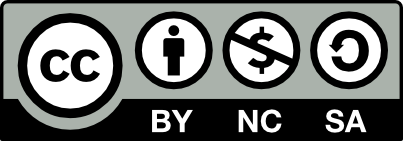@article{ART003022051},
author={이영의},
title={Neo-Humans and Overman in Posthuman Society},
journal={PHILOSOPHY·THOUGHT·CULTURE},
issn={1975-1621},
year={2023},
number={43},
pages={203-228},
doi={10.33639/ptc.2023..43.009}
TY - JOUR
AU - 이영의
TI - Neo-Humans and Overman in Posthuman Society
JO - PHILOSOPHY·THOUGHT·CULTURE
PY - 2023
VL - null
IS - 43
PB - Research Institute for East-West Thought
SP - 203
EP - 228
SN - 1975-1621
AB - The fourth industrial revolution of the 20th century is transforming human life in a very powerful way, driven by the technologies represented by computers, Internet, and smartphone. Human life is unfolding in a very different way than before, especially by integrating humans and objects with offering concrete possibilities for human enhancement and life extension at the physical and cognitive levels. As a result, humans living in the Fourth Industrial Revolution are very different from those who lived in previous eras. In this paper, I look at the new life space formed by the changes brought about by the Fourth Industrial Revolution as the "posthuman era" and its inhabitants as the "neo-humans" and examine the nature of both.
The paper is organized as follows. In Chapter 2, I present hyperconnectivity artificial superintelligence, and superhumanity as the main characteristics of the posthuman era and examines the life problems associated with them. In Chapter 3, I look at transhumanism and posthumanism as the ideologies of the posthuman era and analyze the nature of transhuman, T-posthuman, and posthuman as neo-humans created by these two ideologies. In Chapter 4, I build on the previous discussion to identify the value dimension of the neo-humans, with examining the relationship between the T-posthuman and Nietzsche's notion of Overman, and then focus on the debate in the transhumanist camp and contend that it is wrong to claim a structural analogy between Nietzsche's idea of Overman and transhumanism. Lastly, in Chapter 5 I propose the notions of dignity and personhood to establish the ontological status of the neo-humans. I argue that just as Peter Singer proposed the notion of person as distinct from human to expand the realm of beings worthy of ethical consideration and to escape the traditional human-animal distinction, so too can posthuman escape the human-machine and realistic-virtual distinctions.
KW - hyperconnectivity;superintelligence;posthuman;Transhuman;person;Overman;superhuman
DO - 10.33639/ptc.2023..43.009
ER -
이영의. (2023). Neo-Humans and Overman in Posthuman Society. PHILOSOPHY·THOUGHT·CULTURE, 43, 203-228.
이영의. 2023, "Neo-Humans and Overman in Posthuman Society", PHILOSOPHY·THOUGHT·CULTURE, no.43, pp.203-228. Available from: doi:10.33639/ptc.2023..43.009
이영의 "Neo-Humans and Overman in Posthuman Society" PHILOSOPHY·THOUGHT·CULTURE 43 pp.203-228 (2023) : 203.
이영의. Neo-Humans and Overman in Posthuman Society. 2023; 43 : 203-228. Available from: doi:10.33639/ptc.2023..43.009
이영의. "Neo-Humans and Overman in Posthuman Society" PHILOSOPHY·THOUGHT·CULTURE no.43(2023) : 203-228.doi: 10.33639/ptc.2023..43.009
이영의. Neo-Humans and Overman in Posthuman Society. PHILOSOPHY·THOUGHT·CULTURE, 43, 203-228. doi: 10.33639/ptc.2023..43.009
이영의. Neo-Humans and Overman in Posthuman Society. PHILOSOPHY·THOUGHT·CULTURE. 2023; 43 203-228. doi: 10.33639/ptc.2023..43.009
이영의. Neo-Humans and Overman in Posthuman Society. 2023; 43 : 203-228. Available from: doi:10.33639/ptc.2023..43.009
이영의. "Neo-Humans and Overman in Posthuman Society" PHILOSOPHY·THOUGHT·CULTURE no.43(2023) : 203-228.doi: 10.33639/ptc.2023..43.009
